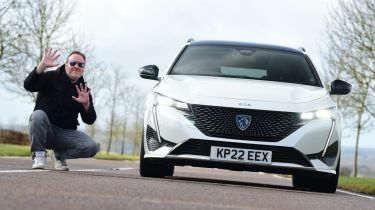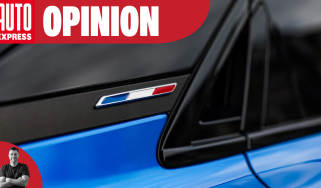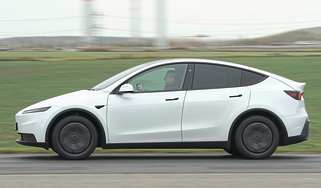Dazzling car headlights are a problem for 90% of UK drivers
The glare from increasingly powerful car headlamps sparks calls for government action

With advances in car headlight technology bringing ever more powerful illumination for drivers at night, whether they’re behind the wheel of a new car or trying out aftermarket bulb upgrades, a new survey suggests the issue of excessive glare dazzling oncoming drivers continues to get worse.
Most drivers have been on the receiving end of retina-piercing glare from oncoming traffic at one time or another, but a recent poll of 2,000 drivers by the RAC has highlighted just how problematic excessive headlamp brightness has become. A whopping nine out of ten drivers think some of the headlights being used on the road are just too bright, three-quarters say they’re regularly being dazzled, while a record three out of ten say most headlights are now producing too harsh a glare.
The RAC has been tracking the problem of headlamp glare in its surveys since 2018, but says its latest findings suggest more drivers than ever are suffering - 85 per cent of respondents this time around believed the issue is getting worse, compared to just over 80 per cent a year ago.
Respondents to the survey reported feedback similar to that which many Auto Express readers have shared, with two thirds of those experiencing problems saying they have to slow down considerably before being able to see well enough to make safe progress again, and a similar number of respondents saying they think some headlights are bright enough to cause accidents - with a significant minority saying they’ve nearly been involved in crashes themselves.
Nearly a tenth of drivers find the problem so bad that they avoid driving after dark, the RAC says, while the number rises to 14 per cent for older drivers aged over 65.
In order to better understand the extent of the problem, the survey asked affected respondents how long it typically takes then to recover safe vision after being dazzled, and just over two thirds estimated a time period of between one and five seconds. Even more worrying is the 11 per cent who stated it takes them six or more seconds to recover safe vision - at 60mph a car would have travelled 160 metres in that time.
What is causing the increase in bright car headlights?
With 85 per cent of affected drivers reporting that the problem of headlamp glare is getting worse, the RAC has listed some of the factors that are likely to be playing a role. These includes the increasing number of cars fitted with LED headlights, which produce a more intense and focused white beam that’s harder on the eyes than traditionally softer yellow light from halogen bulbs.
The popularity of high-riding SUVs is another factor playing its part according to many respondents, but others put the blame on drivers using headlights that are incorrectly adjusted. According to a freedom of information request made to the DVSA by the RAC, five per cent of MoT failures in November last year were due to misaligned headlamps.
“Our figures suggest drivers are more concerned than ever about headlight glare, with a huge proportion wanting to see something done about it,” RAC spokesman Rod Dennis said. “We urgently need the Government to take a closer look at the issue, ideally by commissioning an independent study to understand what’s causing an increase in reports of dazzling and, most importantly, what can do be done to keep drivers safe.”
That view is backed by the College of Optometrists, with director of Knowledge and Research Mike Bowen stating: “Older drivers are likely to be disproportionately affected by headlight glare, so may be more likely to experience difficulties or to decide not to drive at night at all.
“We urge the Government to commission more technical and clinical research to have a better understanding of this issue and what should be done to ease the effects of dazzling headlights.”
How does driving when tired impact your driving? We found out...
Find a car with the experts





